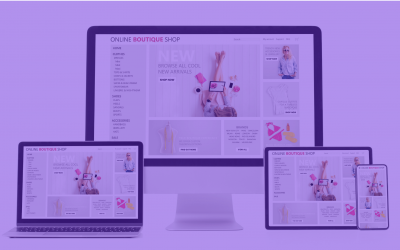Cross Browser Testing Explained
Introduction
Cross Browser Testing is a type of non-functional testing which is performed to ensure that an application behaves as expected both functionally and aesthetically across different browsers
Testers can conduct cross-browser testing either manually or using third-party tools readily available in the market.
Why Conduct Cross Browser Testing?
Different users have different preferences. There is a distinct userbase for each browser present out there. The diversity and variety of web browsers in use is called Browser Fragmentation. Browser Fragmentation is the main reason why creators should focus on Cross Browser Testing, to ensure that users do not face issues caused due to the varieties of browsers in use.
As tech is an ever-growing domain with frequent releases and upgrades being shipped in quick iterations, browsers are always evolving to provide users with new features. The updates and releases could lead to errors in a product.
Each browser has its own implementation method. There are cases where certain features work well with one browser while some features work well with another. For example, products built using the Microsoft Power platform work best when used in Microsoft Edge as compared to other web browsers.
As a development, it is important to know the strengths and weaknesses of a product when used across multiple browsers so the teams can focus on what’s important. Understanding the behavior of an application across different browsers brings clarity to the development team.
How to Conduct Cross Browser Testing?
Manual
According to stats counter data from March 2022, the present browser market share is led by Google Chrome with 64.53%, followed by Safari with 18.84%. The market share for Microsoft Edge is 4.05%, Mozilla Firefox is 3.4%, and so on.
As a best practice, it is advised that any product should be tested in all the browsers that are used by its target audience. This allows products to ensure that users receive a great experience while using the product.
If a product has users across the mobile web, then the development team should make sure that the product is responsive across a variety of browsers, platforms, and a multitude of resolutions. A mobile device includes smartphones as well as tablets.
The mobile browser share is also led by Google Chrome with 63.27% global market share along with Safari (24.8%), Samsung Internet (24.8%), Opera (1.86), Instabridge (1.51), and UC Browser (1.41).
Since there are frequent changes shipped across browsers, one should be aware of the changes made in each version. A tester should be aware of how the product interacts with the browser components. This helps the team find issues whenever new changes are made.
A testing team should frequently conduct regression, smoke, and sanity testing across all the target browsers.
While executing test cases, a tester needs to include the version number/s of the browsers in which the tests were executed. This helps the team visualize the exact point/s at which features were broken and identify the root cause of the issue.
While creating test plans for cross-browser testing, a tester or testing team needs to test the features across multiple versions commonly used by the end-users as well.
Use of Tools
The best way to conduct cross-browser testing is to test the product in the actual browser itself. However, this can not always be possible. Testers might have a Windows app where they cannot install Safari.
While the above problem can be solved by Virtualization, this method might not be accurate as it doesn’t accurately replicate the scenario that the end-user will be using the product. Example: Virtualization can be pretty slow as compared to the actual scenario.
There is a combination of factors that needs to be in place to accurately perform cross-browser testing and replicate the use cases accurately.
To solve this problem, there are lots of readily available tools in the market which reduce lot of dependency on testers.
Some of the most popular tools are:
Outomated
Outomated is a no-code (or low code) platform for performing end-to-end cross-browser tests on various browsers and operating systems.
Outomated APIs can be used to trigger builds within a CI/CD Pipeline or from an external application as well. It eliminates the complex setup and processes allowing testing teams to focus only on the crucial part, i.e. testing.
With its no code or low code (ZWL, programming language), the learning curve is shortened allowing the users to quickly adapt to it. Users can create a project and start testing in quick succession.
BrowserStack
BrowserStack is a tool that helps its users perform cross-browser testing by simulating mobile and web environments. This can help the development team evaluate web applications in terms of functionality, usability, and compatibility.
BrowserStack offers a range of browser options across different platforms such as Mac and Windows. It offers a variety of platform versions such as Windows 10, XP, 8.1, etc., and different versions of macOS along with a multitude of browser versions (different versions of Chrome, Mozilla, Safari, etc.)
Using BrowserStack, teams can manually traverse through their application in a simulated environment across mobile and web platforms and browsers.
With its integration features and automation capabilities, BrowserStack can also be used to perform automated cross-browser tests.
TestComplete
With accelerated release schedules of browsers, new updates are shipped very frequently. TestComplete, a SmartBear product helps the teams perform cross-browser testing by providing the latest release of the browsers in a very short duration.
TestComplete helps teams optimize their cross-browser testing by recording a test performed on a browser. The test can be re-run on multiple supported browsers and versions with little to no modifications in the recorded script.
Using TestComplete logs, users can visualize the status of their tests in detail.
CrossBrowserTesting
CrossBrowserTesting, also a SmartBear product helps testers perform cross-browser testing across a large number of browsers.
It also helps in reporting the issues by taking snapshots and videos of the sessions. Bugs can quickly be shared, which drastically reduces the time spent in manually reporting the issues.
CrossBrowserTesting also provides other capabilities such as analytics and debugging which can be very helpful during testing.
With the automated screenshots feature, users can visualize layouts and responsiveness issues across a large number of devices. Automated tests can easily be run and integrated with CrossBrowserTesting.
Browser Shots
Browser Shots is used to conduct cross-browser testing and browser compatibility testing. Browsershots can be accessed using their website i.e. https://browsershots.org/.
Browser Shot is easy to use. All the supported versions are listed on a single screen along with options to configure screen sizes, color depth, javascript, java, and flash.
It allows users to easily run cross-browser tests after defining the conditions. After completing the tests, browser shots present screenshots that can be used as a reference. If an error is found in a version, users can identify it.
Lambda Test
LambdaTest is a popular tool to test cross-browser compatibility. Users can select the latest web browsers and versions using the Lambdatest interface.
LambdaTest executes real-time interactive tests in a virtual environment. Users can also perform live tests, record their testing sessions, take a screenshot, and report defects quickly. The image can easily be downloaded and pushed to JIRA, saving valuable time.
Users can also test responsiveness on various device sizes and resolutions.
Other notable tools might include Katalon Studio, Test Grid, Perfecto, Experitest, Sauce Labs, Browserling, etc.
Summary
Cross Browser Testing is an integral part of testing which lets a product ensure that users across different browsers can get a great user experience despite the variety.
The users are distributed across multiple browsers across various devices which could potentially lead to functional and design issues. Users could be using web browsers as well as mobile web browsers. A testing team must make sure the product is responsive, functional, and compatible with different browsers and different versions.
Related Posts
Difference between Responsive Testing and Cross Browser Testing
Introduction to Performance Testing
Your Guide To Get Started With Scrum Methodology
Agile Methodology: 4 Values and 12 Principles
How To Write A Defect Report
How To Document Test Scenarios Using Trello
9 Types of Testing Every Tester Should Know
Seven Steps of Testing Process
Difference between Static and Dynamic Testing
7 Principles of Software Testing
Latest Posts
Difference between Responsive Testing and Cross Browser Testing
Difference between Responsive Testing and Cross Browser TestingWhat is meant by cross browser testing? Cross browser...
Introduction to Performance Testing
Introduction to Performance TestingIntroduction to performance testing Did it ever happen to you that you get to...
How to Start Automation Testing from Scratch?
Automation testing can help you detect software defects earlier and improve quality. This blog will teach you everything you need to know about starting automation tests from scratch.



